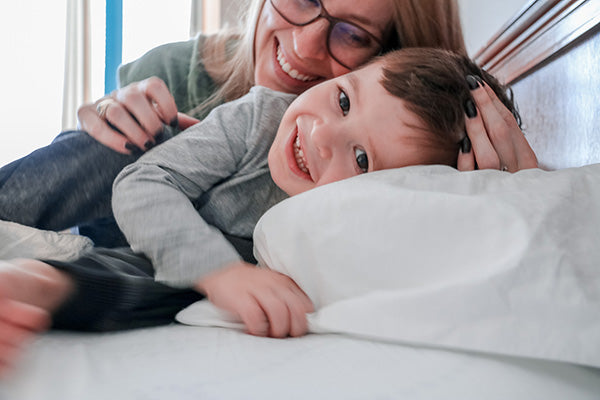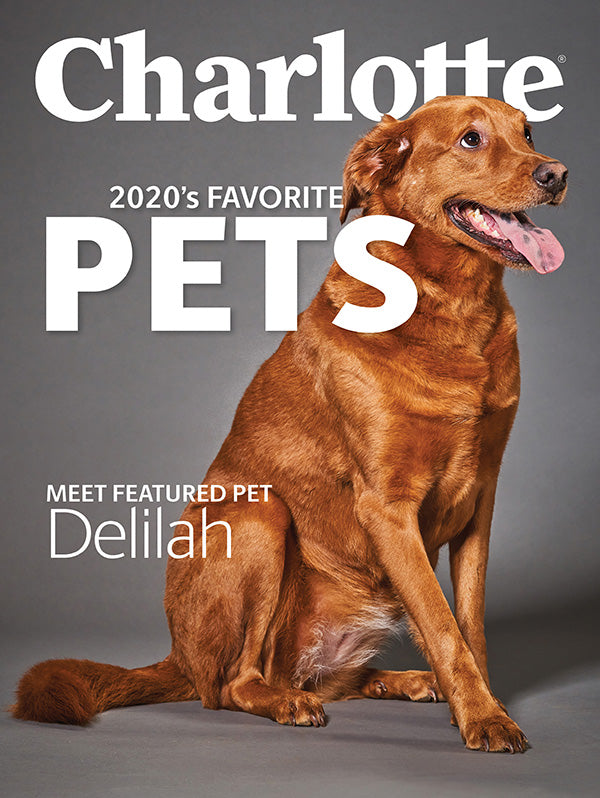We are thrilled and honored to received the best "Cooling" Sheets from our friends at the SleepFoundation.org. Our 100% Hemp Bed Sheets offer a great night sleep that will keep you warm in the winter and cool in the summer.
Here is a great Blog about the importance of sleep.
It’s well-established that sleep is essential to our physical and mental health. But despite its importance, a troubling percentage of people find themselves regularly deprived of quality sleep and are notably sleepy during the day.
Though there’s a wide range of causes and types of sleeping problems, expert consensus points to a handful of concrete steps that promote more restful sleep. Organizations like the CDC1, the National Institutes of Health2, the National Institute on Aging3, and the American Academy of Family Physicians4 point to the same fundamental tips for getting better rest.
For many people, trying to implement all these strategies can be overwhelming. But remember that it’s not all-or-nothing; you can start with small changes and work your way up toward healthier sleep habits, also known as sleep hygiene.
To make these sleep hygiene improvements more approachable, we’ve broken them into four categories:
Creating a Sleep-Inducing Bedroom
Optimizing Your Sleep Schedule
Crafting a Pre-Bed time Routine
Fostering Pro-Sleep Habits During the Day
In each category, you can find specific actions that you can take to make it easier to fall asleep, stay asleep, and wake up well-rested.
Creating a Sleep-Inducing Bedroom
An essential tip to help fall asleep quickly and easily is to make your bedroom a place of comfort and relaxation. Though this might seem obvious, it’s often overlooked, contributing to difficulties getting to sleep and sleeping through the night.
In designing your sleep environment, focus maximizing comfort and minimizing distractions, including with these tips:
Use a High-Performance Mattress and Pillow: A quality mattress is vital to making sure that you are comfortable enough to relax. It also ensures, along with your pillow, that your spine gets proper support to avoid aches and pains.
Choose Quality Bedding: Your sheets and blankets play a major role in helping your bed feel inviting. Look for bedding that feels comfortable to the touch and that will help maintain a comfortable temperature during the night.
Avoid Light Disruption: Excess light exposure can throw off your sleep and circadian rhythm. Blackout curtains over your windows or a sleep mask for over your eyes can block light and prevent it from interfering with your rest.
Cultivate Peace and Quiet: Keeping noise to a minimum is an important part of building a sleep-positive bedroom. If you can’t eliminate nearby sources of noise, consider drowning them out with a fan or white noise machine. Earplugs or headphones are another option to stop abrasive sounds from bothering you when you want to sleep.
Find an Agreeable Temperature: You don’t want your bedroom temperature to be a distraction by feeling too hot or too cold. The ideal temperature can vary based on the individual, but most research supports sleeping in a cooler room that is around 65 degrees.
Introduce Pleasant Aromas: A light scent that you find calming can help ease you into sleep. Essential oils with natural aromas, such as lavender5, can provide a soothing and fresh smell for your bedroom.
Optimizing Your Sleep Schedule
Taking control of your daily sleep schedule is a powerful step toward getting better sleep. To start harnessing your schedule for your benefit, try implementing these four strategies:
Set a Fixed Wake-Up Time: It’s close to impossible for your body to get accustomed to a healthy sleep routine if you’re constantly waking up at different times. Pick a wake-up time and stick with it, even on weekends or other days when you would otherwise be tempted to sleep in.
Budget Time for Sleep: If you want to make sure that you’re getting the recommended amount of sleep each night, then you need to build that time into your schedule. Considering your fixed wake-up time, work backwards and identify a target bedtime. Whenever possible, give yourself extra time before bed to wind down and get ready for sleep.
Be Careful With Naps: To sleep better at night, it’s important to use caution with naps. If you nap for too long or too late in the day, it can throw off your sleep schedule and make it harder to get to sleep when you want to. The best time to nap is shortly after lunch in the early afternoon, and the best nap length is around 20 minutes.
Adjust Your Schedule Gradually: When you need to change your sleep schedule, it’s best to make adjustments little-by-little and over time with a maximum difference of 1-2 hours per night. This allows your body to get used to the changes so that following your new schedule is more sustainable.
Crafting a Pre-Bed Routine
If you have a hard time falling asleep, it’s natural to think that the problem starts when you lie down in bed. In reality, though, the lead-up to bedtime plays a crucial role in preparing you to fall asleep quickly and effortlessly.
Poor pre-bed habits are a major contributor to insomnia and other sleep problems. Changing these habits7 can take time, but the effort can pay off by making you more relaxed and ready to fall asleep when bedtime rolls around.
As much as possible, try to create a consistent routine that you follow each night because this helps reinforce healthy habits and signals to mind and body that bedtime is approaching. As part of that routine, incorporate these three tips:
Wind Down For At Least 30 Minutes: It’s much easier to doze off smoothly if you are at-ease. Quiet reading, low-impact stretching, listening to soothing music, and relaxation exercises are examples of ways to get into the right frame of mind for sleep.
Lower the Lights: Avoiding bright light can help you transition to bedtime and contribute to your body’s production of melatonin, a hormone that promotes sleep.
Disconnect From Devices: Tablets, cell phones, and laptops can keep your brain wired, making it hard to truly wind down. The light from these devices can also suppress your natural production of melatonin. As much as possible, try to disconnect for 30 minutes or more before going to bed.
Fostering Pro-Sleep Habits During the Day
Setting the table for high-quality sleep is an all-day affair. A handful of steps that you can take during the day can pave the way for better sleep at night.
See the Light of Day: Our internal clocks8 are regulated by light exposure. Sunlight has the strongest effect9, so try to take in daylight by getting outside or opening up windows or blinds to natural light. Getting a dose of daylight early in the day can help normalize your circadian rhythm. If natural light isn’t an option, you can talk with your doctor about using a light therapy box.
Find Time to Move: Daily exercise has across-the-board benefits for health, and the changes it initiates in energy use and body temperature can promote solid sleep. Most experts advise against intense exercise close to bedtime because it may hinder your body’s ability to effectively settle down before sleep.
Monitor Your Caffeine Intake: Caffeinated drinks, including coffee, tea, and sodas, are among the most popular beverages in the world. Some people are tempted to use the jolt of energy from caffeine to try to overcome daytime sleepiness, but that approach isn’t sustainable and can cause long-term sleep deprivation. To avoid this, keep an eye on your caffeine intake and avoid it later in the day when it can be a barrier to falling sleep.
Be Mindful of Alcohol: Alcohol can induce drowsiness, so some people are keen on a nightcap before bed. Unfortunately, alcohol affects the brain in ways that can lower sleep quality, and for that reason, it’s best to avoid alcohol in the lead-up to bedtime.
Don’t Eat Too Late: It can be harder to fall asleep if your body is still digesting a big dinner. To keep food-based sleep disruptions to a minimum, try to avoid late dinners and minimize especially fatty or spicy foods. If you need an evening snack, opt for something light and healthy.
Don’t Smoke: Exposure to smoke, including secondhand smoke, has been associated with a range of sleeping problems10 including difficulty falling asleep and fragmented sleep.
Reserve Your Bed for Sleep and Sex Only: If you have a comfortable bed, you may be tempted to hang out there while doing all kinds of activities, but this can actually cause problems at bedtime. You want a strong mental association between your bed and sleep, so try to keep activities in your bed limited strictly to sleep and sex.
If You Can’t Fall Asleep
Whether it’s when you first get into bed or after waking up in the middle of the night, you may find it hard to drift off to sleep. These tips help explain what to do when you can’t sleep:
Try Relaxation Techniques: Don’t focus on trying to fall asleep; instead, focus on just trying to relax11. Controlled breathing, mindfulness meditation, progressive muscle relaxation, and guided imagery are examples of relaxation methods that can help ease you into sleep12.
Don’t Stew in Bed: You want to avoid a connection in your mind between your bed and frustration from sleeplessness. This means that if you’ve spent around 20 minutes in bed without being able to fall asleep, get out of bed and do something relaxing in low light. Avoid checking the time during this time. Try to get your mind off of sleep for at least a few minutes before returning to bed.
Experiment With Different Methods: Sleeping problems can be complex and what works for one person may not work for someone else. As a result, it makes sense to try different approaches to see what works for you. Just remember that it can take some time for new methods to take effect, so give your changes time to kick in before assuming that they aren’t working for you.
Keep a Sleep Diary: A daily sleep journal can help you keep track of how well you’re sleeping and identify factors that might be helping or hurting your sleep. If you’re testing out a new sleep schedule or other sleep hygiene changes, the sleep diary can help document how well it’s working.
Talk With a Doctor: A doctor is in the best position to offer detailed advice for people with serious difficulties sleeping. Talk with your doctor if you find that your sleep problems are worsening, persisting over the long-term, affecting your health and safety (such as from excessive daytime sleepiness), or if they occur alongside other unexplained health problems.
References
+12 Sources
- National Center for Chronic Disease Prevention and Health Promotion, Division of Population Health. (2016, July 15). CDC - Sleep Hygiene Tips - Sleep and Sleep Disorders. Retrieved June 15, 2020, from https://www.cdc.gov/sleep/about_sleep/sleep_hygiene.html
- A.D.A.M. Medical Encyclopedia [Internet]. Atlanta (GA): A.D.A.M., Inc.; c1997-2019. Can’t sleep? Try these tips. Updated August 3, 2018. Retrieved June 15, 2020. Available from: https://medlineplus.gov/ency/patientinstructions/000853.htm
- National Institute on Aging (NIA). (2016, May 1). A Good Night’s Sleep. Retrieved June 15, 2020, fromhttps://www.nia.nih.gov/health/good-nights-sleep
- American Academy of Family Physicians (AAFP). (2015, December 15). Chronic Insomnia: What You Can Do to Sleep Better. Retrieved June 15, 2020, from https://www.aafp.org/afp/2015/1215/p1058-s1.html
- Koulivand, P. H., Khaleghi Ghadiri, M., & Gorji, A. (2013). Lavender and the nervous system. Evidence-based complementary and alternative medicine : eCAM, 2013, 681304. https://www.hindawi.com/journals/ecam/2013/681304/
- National Heart, Lung, and Blood Institute (NHLBI). (2011, September). In Brief: Your Guide to Healthy Sleep. Retrieved June 15, 2020, from https://www.nhlbi.nih.gov/files/docs/public/sleep/healthysleepfs.pdf
- A.D.A.M. Medical Encyclopedia [Internet]. Atlanta (GA): A.D.A.M., Inc.; c1997-2019. Changing your sleep habits. Updated April 15, 2019. Retrieved June 15, 2020. Available from: https://medlineplus.gov/ency/patientinstructions/000757.htm
- Division of Sleep Medicine at Harvard Medical School. (2007, December 18). The Drive to Sleep and Our Internal Clock | Healthy Sleep. Retrieved June 15, 2020, from http://healthysleep.med.harvard.edu/healthy/science/how/internal-clock
- National Optical Astronomy Observatory (NOAO). (n.d.). Recommended Light Levels. Retrieved June 15, 2020, from https://www.noao.edu/education/QLTkit/ACTIVITY_Documents/Safety/LightLevels_outdoor+indoor.pdf
- Zandy, M., Chang, V., Rao, D. P., & Do, M. T. (2020). Tobacco smoke exposure and sleep: estimating the association of urinary cotinine with sleep quality. Health Promotion and Chronic Disease Prevention in Canada, 40(3), 70–80. https://www.canada.ca/en/public-health/services/reports-publications/health-promotion-chronic-disease-prevention-canada-research-policy-practice/vol-40-no-3-2020/tobacco-smoke-exposure-sleep-study.html
- Lichstein, K., Taylor, D., McCrae, C., & Thomas, S. (2010). Relaxation for Insomnia. In M. Aloia, B. Kuhn, & M. L. Perlis (Eds.), Behavioral Treatments for Sleep Disorders: A Comprehensive Primer of Behavioral Sleep Medicine Interventions (Practical Resources for the Mental Health Professional) (1st ed., pp. 45–54). Retrieved from https://www.med.upenn.edu/cbti/assets/user-content/documents/Lichstein_RelaxationforInsomnia-BTSD.pdf
- Jerath, R., Beveridge, C., & Barnes, V. A. (2019). Self-Regulation of Breathing as an Adjunctive Treatment of Insomnia. Frontiers in psychiatry, 9, 780. https://www.frontiersin.org/articles/10.3389/fpsyt.2018.00780/full




Leave a comment
This site is protected by hCaptcha and the hCaptcha Privacy Policy and Terms of Service apply.